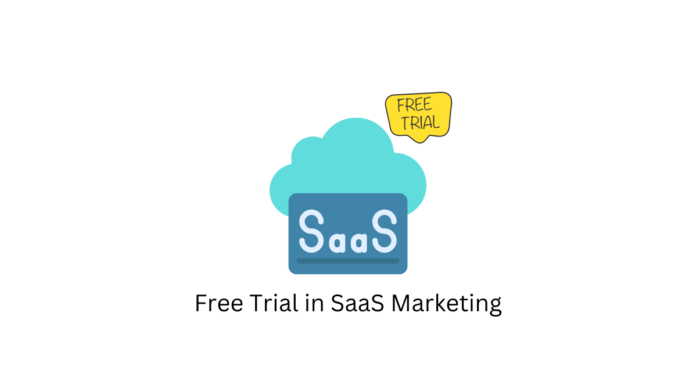Last updated - February 7, 2023
Software as a Service (SaaS) follows different rules than traditional products. In SaaS, customers typically pay monthly or annually to access and use the software rather than buying it outright. As such, companies must focus on maintaining a steady stream of new subscribers. They must also keep current subscribers engaged so that they renew their subscriptions.
One common approach for attracting new customers in SaaS marketing is offering a free trial period. During this time, potential customers can try out the software and see if it meets their needs before committing to a paid subscription. But what are the advantages and disadvantages of this strategy? Let’s take a closer look.
Advantages of Free Trials
The reason so many companies offer free trials is that it provides much more advantages than disadvantages. Here are a few:
Easy Lead Generation


Lead generation is one of the toughest challenges for SaaS marketers. They don’t have brick-and-mortar locations to drive foot traffic or physical products to showcase in advertisements. Free trials provide a low-commitment way for potential customers to engage with the software. They can then easily become leads for the sales team.
Customers Get The Product Experience
In many industries, potential customers have the opportunity to test out a product before they buy it. In SaaS, this can be more difficult as the product is intangible and accessed through a website or app. Free trials allow customers to experience the product firsthand and see if it meets their needs.
It’s better for both the customer and the company to find out if the product is a good fit during the trial period. Otherwise, things can get ugly after they’ve made a financial commitment. Avoid negative reviews, refund requests, and churn by offering a free trial.
Eliminate Fear of Long-Term Commitment
Many potential customers hesitate to commit to a subscription without trying the product first. This is especially true if your product carries a hefty price tag. Free trials eliminate this fear by allowing them to try it out and cancel at any time during the trial period.
For customers who decide to commit after the trial, offering a free trial can also give them peace of mind. They know they’re making a good decision and getting their money’s worth.
Acquire Feedback
Every customer who signs up for a free trial is a chance for your company to gather valuable feedback on the product. It can be in the form of surveys during and after the trial and observing how customers engage with and use the product. You can then use this information to improve the product and make it even more attractive to other potential customers.
Many companies tailor their entire SaaS lead generation strategies around the free trial. For example, they’ll create special landing pages and campaigns to drive sign-ups.
Analyze Data
In addition to customer feedback, free trials allow your company to gather essential data. Capture information on how customers use the product during their trial period, their demographic information, and where they found out about the free trial. With this data, you can optimize your marketing efforts and target better leads.
Use free trial analytics to determine the most successful aspects of your product and focus your future efforts on those.
Increase Sales Conversions
At the end of the day, you’re looking for conversions from free trial users to paid subscribers. By offering potential customers a low-cost and easy way to test a product, you increase their confidence in making the purchase. They will see the value in your offering and understand how it can solve their problems. Ultimately, this can lead to higher conversion rates and revenue for your company.
Grow Email Subscribers List


In order for new customers to sign up for a free trial, they often have to provide their email addresses. That gives your company the opportunity to grow an email subscriber list. You can continue marketing to those potential customers even after their trial period is over.
Maybe this particular product wasn’t the right fit for them, but they may be interested in future offerings from your company. A successful free trial experience can also lead to word-of-mouth marketing. Satisfied customers may recommend the product to their friends and colleagues.
Enhance Customer Journey
No matter the outcome of the free trial, it can enhance the overall customer journey and make for a positive brand image. Offering a free trial shows that your company has confidence in its product and is willing to let potential customers try it out risk-free. It can create trust and loyalty in your brand, leading to long-term retention and repeat customers.
Ideally, you have a sales funnel in place during the free trial period to guide users toward committing to a paid subscription. Include onboarding emails, personalized support, and special offers or discounts.
Disadvantages of Free Trials


Of course, free trials aren’t without disadvantages. Before implementing one in your SaaS marketing strategy, consider the following potential drawbacks:
May Attract “Freebie Seekers”
Some customers may just be looking for a temporary, free solution and have no intention of becoming paying subscribers. They may abuse the free trial by demanding extensive support or using up resources without any intention of converting. Once they’re finished with the free trial, they move on to the next company offering a similar product.
These freebie seekers will increase your customer acquisition costs and customer churn rates. They will also decrease the overall ROI of your free trial strategy.
Increased Overhead Costs
Offering free trials is anything but free for your company. There are costs associated with setting up and managing the trial and providing support for trial users. These expenses can add up, especially if you have a high volume of trial sign-ups. Remember that there will be an inevitable delay between trial sign-ups and conversions. Make sure you have a plan in place to offset those overhead costs.
For example, if your free trial period is 14 days, you won’t see any money from those users until at least two weeks after they sign up. Even then, they may need more time before deciding whether to convert to a paid subscription.
Highly Competitive Market
In the SaaS industry, free trials have become the norm. Customers expect them and may be hesitant to commit to a subscription without trying out the product first. This can make it difficult to stand out in a sea of competitors all offering similar free trial options. You’ll really need to nail down your unique selling points and effectively communicate those to potential customers during the trial period.
Final Thoughts
Overall, free trials can be a valuable tool in your SaaS marketing strategy. Depending on your product, the advantages may outweigh the disadvantages and lead to increased conversions. If a free trial isn’t right for you, consider alternative options such as:
Freemium: Offer limited access or features for free with the option to upgrade to a paid subscription for more capabilities.
Demos: Give personalized walk-throughs or demonstrations of your product.
Free consultations: Provide one-on-one support and advice to potential customers. Explain how your product can solve its pain points. This can also lead to upselling opportunities during the consultation.











